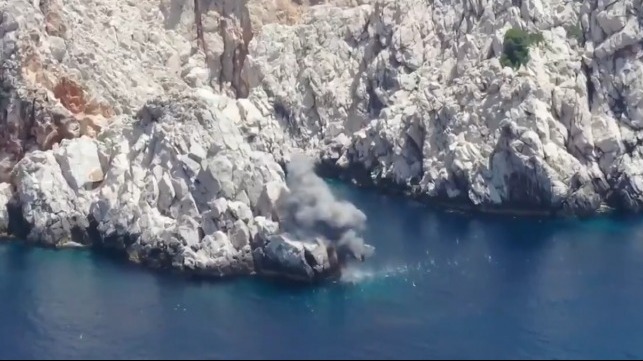ARES Shipyard Completes Live-Fire Testing With Armed Unmanned Vessel

Turkish defense shipbuilder ARES Shipyard has conducted its first live-fire missile launch test for its new ULAQ unmanned vessel prototype, and it has already put the vessel to use for a hazardous mission.
The 11-meter, fully autonomous interceptor is equipped with six guided missiles, and the ARES team - with partner Meteksan Defense - has tested the weapons package on a shoreside target. At an initial test ceremony at the end of May, senior officials from Turkey’s ministry of defense were on hand to witness a simulated attack. The vessel detected the target and successfully destroyed it with CIRIT laser-guided antitank missiles.
"The days have come where we began to see similar products to the game changer [unmanned aerial vehicles], now in land vehicle, surface vessel and submarine forms. We are aware that combat environments with integrated unmanned systems await us and therefore we continue our work accordingly," said the president of Turkey's Defence Industries, Prof. Dr. Ismail Demir.
According to ARES, ULAQ's autonomous algorithms also give it the capability to operate jointly with other unmanned air and surface assets - including sister vessels of the same design. ULAQ will likely be seen in Turkish service soon, and it may be coming to other nations as well. ARES envisions a range of non-combatant roles for ULAQ as well, including intelligence and electronic warfare, firefighting and humanitarian aid/evacuation.
In a second test in late June, ULAQ took part in the trial of a much larger munition - the Atmaca anti-ship cruise missile. The Turkish corvette TCG Kinaliada launched the missile at a decommissioned research vessel, the Isin. The Atcama followed an ultra-low flight path about three to five feet off the surface before striking, and ULAQ captured the event with its cameras from about three nautical miles away. The unmanned platform gave the test's planners a close-up look at the moment of impact without putting manned assets in the live-fire area.
